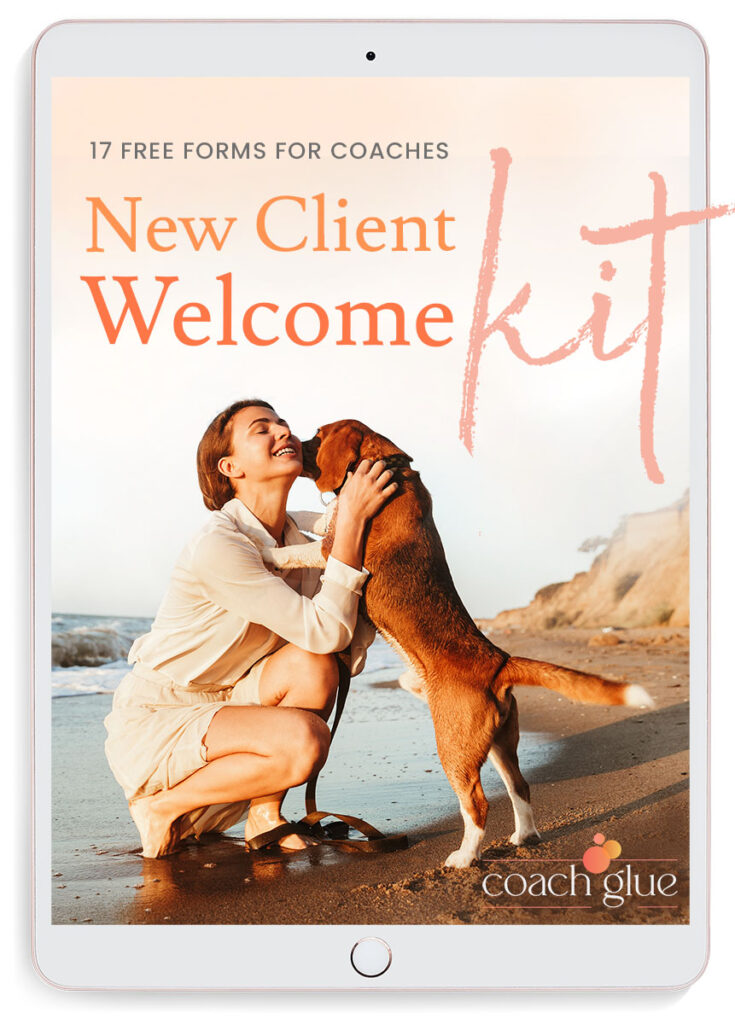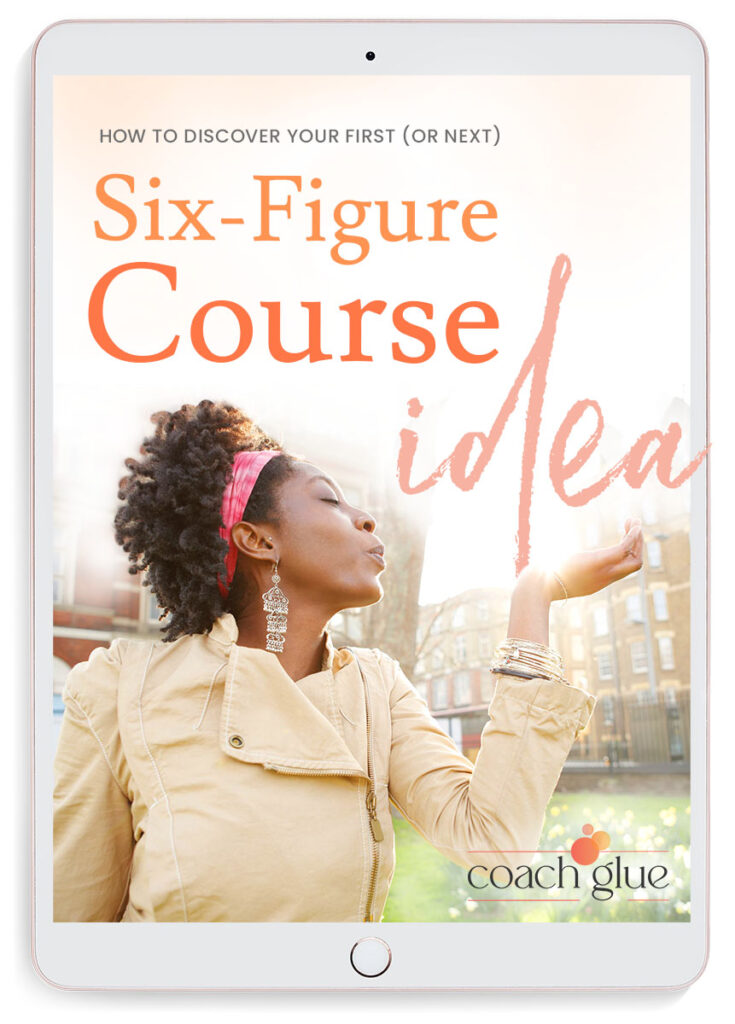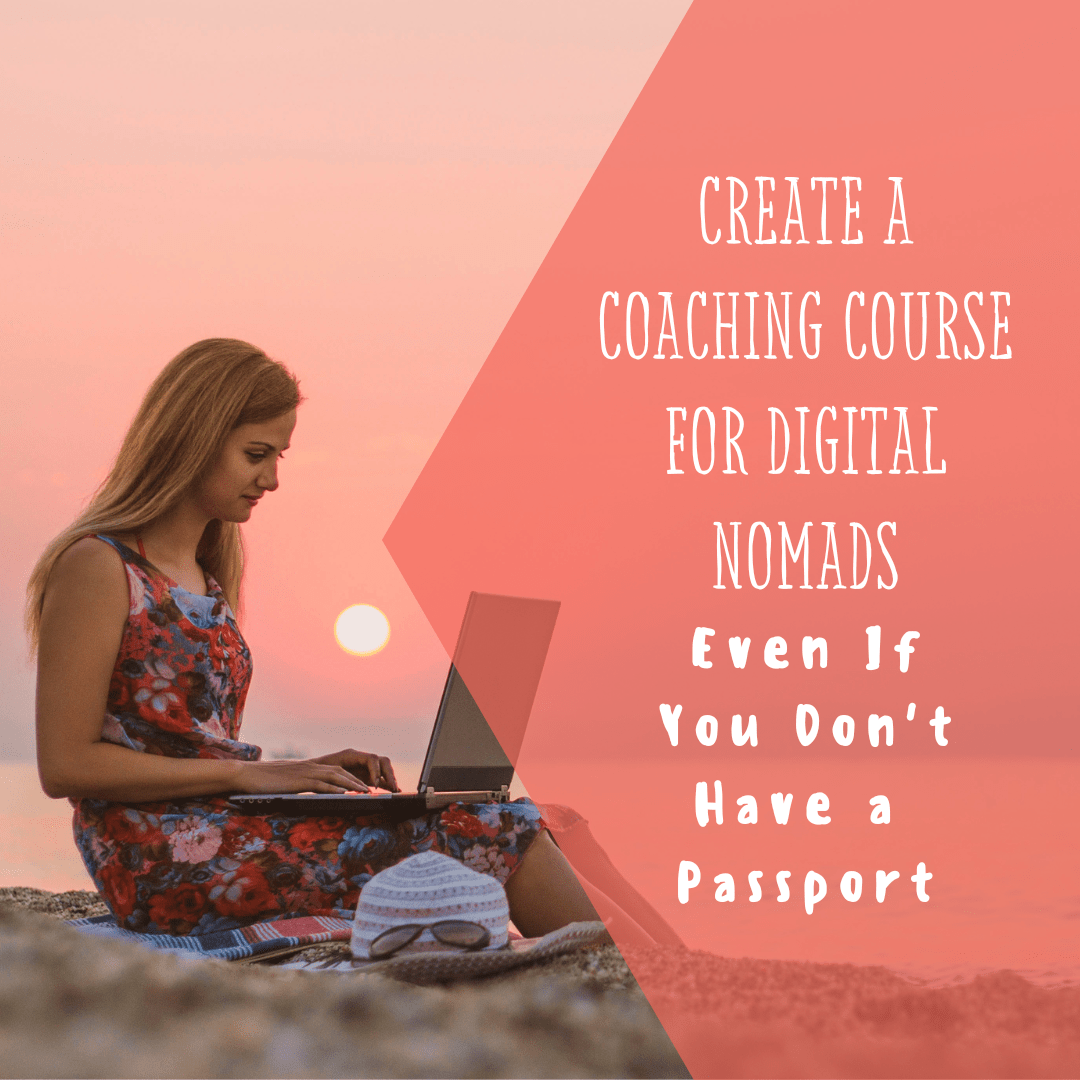Why do we love Pinterest for coaches? Oh, let us count the ways. First of all, it’s free. Second, it’s fun. And third–and perhaps most importantly–it’s effective. It’s true: If you want to build your audience without spending every free second on social media (and um, what busy entrepreneur doesn’t?), Pinterest just might be your new favorite social media platform.
Here’s the deal, though: Pinterest isn’t actually social media. It functions more like a search engine. This is great news because it means one well-crafted Pinterest pin can attract leads (and dreamy clients) for months or years to come.
Want to get started profiting from Pinterest, or looking to level up your pin game? Here’s how to use your Pinterest for maximum sales:
1) Point Pinners to Your Email List
According to research, 90% of Pinterest users say the platform helps them decide what to purchase. That said, not every single person (aka potential dreamy client) who scrolls across your content is going to instantly whip out their credit card or inquire about your high-level coaching package.
That’s where your email list comes in.
The main goal for Pinterest isn’t usually direct sales, it’s to grow your email list with targeted leads, so they can soak up your valuable free content, get to know, like and trust you, and–fingers crossed!–turn into a client down the road. (And a higher-end client, at that.)
If you focus on creating effective content that gets people excited and inspired to learn more from you, you can get them on your email list – and then sell from there.
Here’s what to do:
Create Pinterest pins that direct viewers to your freebies and other lead magnets. These pins should be attractive and have clear, easy-to-read and super catchy headlines. You’ll also want to make sure you’re using Pinterest SEO best practices to ensure the right people find and click your pins.
Once someone follows your link, the hope is they sign up for freebie and get on your email list.
From there, you can nurture the relationship via email over several days, weeks or months…and eventually invite them to a discovery call, offer a low-cost program or promote whatever you have going on in your business
It’s not a ‘get rich quick overnight’ strategy–but it is a strategy that will keep working for you. A pin can take weeks or even months to gain traction, but it also never ‘expires’ (or vanishes like Instagram Stories, for example). Translation? You can passively make sales from your pins for years! How’s that for leveraging your time and energy?
2) Promote Your Products & Services Within Your Free Content
Pinterest is THE place to promote your free content. But we don’t just mean free lead magnets. Oh, no. Everything from blog posts to podcast interviews to YouTube videos can do well on Pinterest (with the right SEO, of course–and an eye-catching, scroll-stopping graphic).
But how can you make sure your free content turns into paid clients and customers?
Here are just a few examples:
Promote your lower-end products and courses within your free content! Be sure to call out and link to relevant products and services. For example, if you write a blog post about Instagram marketing and you offer an introductory product on Instagram captions, link to it! You’d be surprised how many people might take you up on this entry-level offer.
Utilize content upgrades within your blog posts to get people on your email list. This way, you can show them you truly understand the topic at hand (through whatever your content upgrade is) and continue to send them content that’s highly relevant to them and their specific problem(s)
3) Pin Directly to Your Products & Services
We just said it’s not usually the goal to make sales directly from Pinterest, but that definitely doesn’t mean it’s not possible! Here’s the deal: people who find your content are searching for it specifically at the exact moment it shows up on their feed. And that’s powerful!
This means the traffic on Pinterest is very warm. They’re only ‘cold’ in the sense that they likely don’t know you and your business. But if you can get the right content in front of the right content at the right time, you can definitely convert people right off the platform.
Again, this works best with lower-end offers (like a low-cost product or online course), but you can also experiment with pins that lead to higher-end offers (like your coaching services page, coaching packages sales page or even direct to your calendar).
4) Uplevel Your Website for Sales
Most pins–especially blog posts and podcast show notes–will lead people to your website.
That said, your website should be set up specifically to turn readers into buyers.
What this looks like will vary from coach to coach, depending on your goals.
For most coaches, you’ll want to focus on getting these warm leads on your website onto your email list. This means you should optimize your site for email with tools like an opt-in box, an exit pop-up banner to catch people before they click away and all the other tools we’ve discussed (like content upgrades).
If you’re not as email-obsessed as we are, you can also experiment with a tool like HelloBar that directs readers to anything you want (like a low-end offer, time-sensitive workshop or even your calendar).
To wrap up, let’s be clear: Every single strategy on this list requires one thing–quality content that people actually care to click on in the first place. You not only need Pinterest pins that stop the scroll and show up in search, you also need the content they click on to provide value and intrigue them enough to want to learn more from you.
Don’t have the time–or desire–to create lots of free, high-quality content to pin on Pinterest?
We’ve got you covered. Click here to check out CoachGlue’s VIP Club which includes thousands of dollars worth of done-for-you blog posts, courses, workshops and so much more that you can easily transform into pin-worthy content–without writing a single word from scratch!






